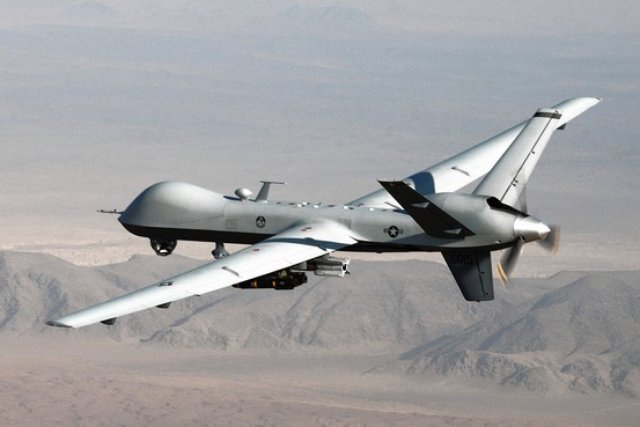 The CIA has urged the White House to boost the agency’s armed UAS fleet to fight new North Africa al-Qaida threats, U.S. officials told The Washington Post.
The CIA has urged the White House to boost the agency’s armed UAS fleet to fight new North Africa al-Qaida threats, U.S. officials told The Washington Post.
The request by CIA Director David H. Petraeus for up to 10 remotely piloted aircraft would strengthen Washington’s ability to stop the growth of an increasingly aggressive al-Qaida affiliate known as al-Qaida in the Islamic Maghreb, White House officials said.
The insurgency group, based in the landlocked West Africa country of Mali, seeks to overthrow the neighbouring Algerian government and institute an Islamic state.
U.S. spy agencies have linked the group, which has declared its intention to attack U.S. targets, to the deadly Sept. 11 attack on the U.S. Consulate in Benghazi, Libya. But officials have not said it was involved in the attack.
The group, which the State Department has labeled a foreign terrorist organization, has also vowed to attack Spanish and French targets.
It has gained weapons and territory following the collapse of regimes in Libya and Mali, officials said.
The regime of Libyan leader Moammar Gadhafi was overthrown in October 2011. The Malian government was overthrown in a coup in March.
The Maghreb refers to a region of Northwest Africa west of Egypt, notably Algeria, Libya, Mauritania, Morocco and Tunisia.
The Petraeus proposal was recently submitted to the White House National Security Council, but no decision has been made, the officials told the Post.
It is being evaluated by a White House panel known as the Counterterrorism Security Group, chaired by President Barack Obama’s chief counterterrorism adviser, John O. Brennan, officials said.
The Pentagon did not oppose the plan, a senior Defense official told the Post. The Pentagon and other departments in the past expressed concerns about the CIA’s expanding arsenal and growing involvement in lethal paramilitary operations.
“With what happened in Libya, we’re realizing that these places are going to heat up,” an official told the newspaper, referring to the Sept. 11 Benghazi attack.
“I think we’re actually looking forward a little bit,” the official said, pointing out that officials have begun to map out contingencies but have made no decision about moving armed CIA drones into new regions.
The CIA, which currently has 30 to 35 UAS, would still conduct lethal-strike campaigns in Pakistan and Yemen, officials said.
A UAS strike in Yemen Thursday — the 35th this year — killed at least seven al-Qaida-linked militants near Jaar, a southern town previously controlled by al-Qaida in the Arabian Peninsula, a militant Islamist organization active mostly in Yemen and Saudi Arabia.
This al-Qaida branch has generally been the most active al-Qaida franchise as Osama bin Laden’s al-Qaida organization weakened, the Council on Foreign Relations foreign-policy think tank says.
White House, CIA and Pentagon officials declined to comment on the Petraeus proposal.
The U.S. military has a UAS fleet separate from the CIA’s that is much larger.
A Pentagon report issued this year counted 246 MQ-1 Predator, MQ-9 Reapers and RQ-4 Global Hawks in the Air Force inventory alone, the Post said. Hundreds of other remotely piloted aircraft are distributed among the Army, Navy and Marines, the report said.
Source: Bloomberg Business Week
